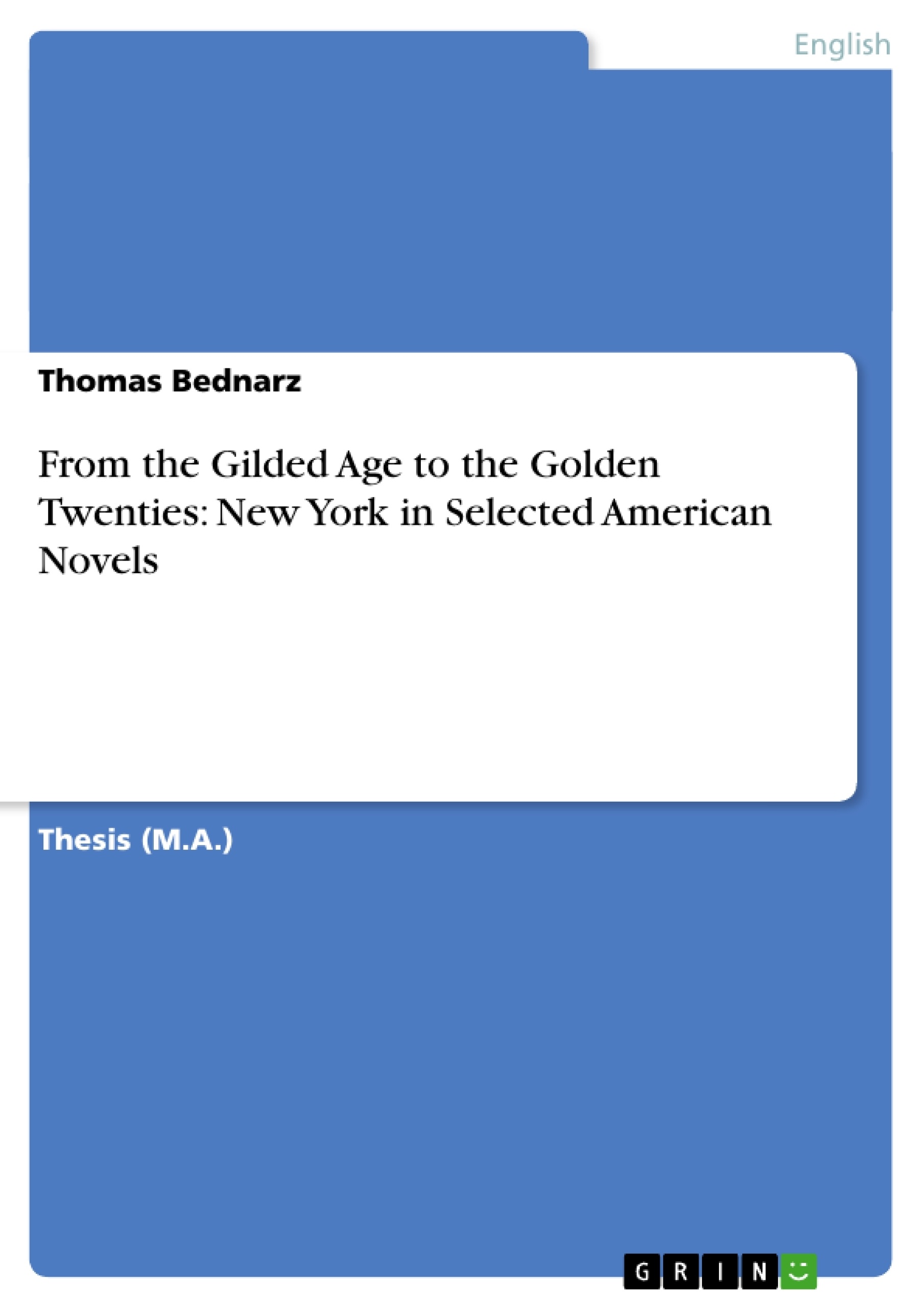[...] The above quotations are taken from the three novels to be discussed in
this essay, each of which focuses on certain aspects of New York.
Manhattan Transfer is certainly more directly connected to the city that ?
as the novel seems to convey ? loses its original center while it becomes
one in itself than the other two novels, but the events outlined in The
Great Gatsby or in The House of Mirth do not just happen to take place in
New York or within its upper class society either. In both cases, a clear
distinction is made between the geographical setting of the novel and the
West: In The House of Mirth, it is Mrs. Norma Hatch, a rich woman from an
unnamed location in the West, who is “unplaced”1 in New York’s high
society, and in The Great Gatsby, the first-person narrator himself
repeatedly contrasts the East with his Midwestern homeland. In both cases,
New York was certainly not casually chosen as a counterpart to the more
rural West. The whole novels, and not only certain parts of them, are thus
1 Wharton, Edith. The House of Mirth. Harmondsworth: Penguin Books, 1993; p. 273.
3
linked to New York; their “ensemble effects are cumulative.”2 Therefore, an
analysis of The House of Mirth and The Great Gatsby oriented on the plotstructure
and the respective main character of the novel3 will be given
following a short summary and style description. However, there is no
actual main character in Manhattan Transfer so that the analysis has to be
guided along the principal theme, which seems to be the decentralization of
the city and the effect of the same on New York’s inhabitants.
My selection seems to favor upper-class backgrounds, leaving out
books like Theodore Dreiser’s Sister Carrie or Stephen Crane’s novelette
Maggie: A Girl of the Streets, but since Dos Passos’s novel provides a
general view of all social classes, I have sought to balance the choice along
different lines. Wharton’s The House of Mirth describes the social decline of
its main character, while the title character of The Great Gatsby has
changed from penniless to extraordinarily rich within just three years. [...]
2 Lopate, Phillip (ed.). Writing New York. New York: Literary Classics of the United
States, 1998; p. XXII (introduction by the editor).
3 See Frye, Northrop. Anatomy of Criticism: Four Essays . Princeton: Princeton
University Press, 1971.
Inhaltsverzeichnis (Table of Contents)
- Historical Introduction
- The House of Mirth
- Summary
- Basic Structure and Narrative Technique
- Interpretation
- Lily's Hybris
- Other Reasons for Miss Bart's Failure
- Lily's Moral Objections
- The Satirical Ending of The House of Mirth
- Manhattan Transfer
- Style and Narrative Technique
- The Central Issue
- Interpretation
- The Importance of First Impression
- Advertising or Exploiting the Faith in Success
- The Supremacy of Coincidence
- Success versus Happiness
- A Happy Outsider Within the City: Congo Jake
- The City As Character
- The Great Gatsby
- Basic Structure and Narrative Technique
- Summary
- Interpretation
- The Impossible Task
- Gatsby's Greatness
- Gatsby as Messiah
- Reasons for Gatsby's Failure
- The Inappropriate Bait
- The Missing Contrast
- Gatsby's Weak Spot
- Gatsby's Chances to Succeed
Zielsetzung und Themenschwerpunkte (Objectives and Key Themes)
This essay examines three novels that focus on different aspects of New York City during the late 19th and early 20th centuries. The analysis explores how the city's transformation from the Gilded Age to the Golden Twenties is depicted in these works, with particular attention to social structures, individual aspirations, and the impact of wealth and social status.
- The changing social landscape of New York City
- The role of wealth and social status in individual success and happiness
- The influence of historical events on the city's development
- The impact of social structures and societal expectations on individual lives
- The complex relationship between individuals and the urban environment
Zusammenfassung der Kapitel (Chapter Summaries)
The first chapter provides a historical introduction to New York City during the period under examination. It explores the changing demographics, social dynamics, and political landscape of the city, laying the foundation for the analysis of the novels.
The second chapter delves into Edith Wharton's The House of Mirth, examining the novel's central themes of social ambition, wealth, and the consequences of social exclusion. The chapter analyzes the narrative structure and the character of Lily Bart, highlighting the factors that contribute to her tragic downfall.
The third chapter focuses on John Dos Passos's Manhattan Transfer, exploring the fragmented and multifaceted depiction of New York City in the early 20th century. The chapter examines the novel's unique style and narrative technique, analyzing its portrayal of urban life, individual aspirations, and the city's rapid transformation.
The fourth chapter analyzes F. Scott Fitzgerald's The Great Gatsby, delving into the themes of love, wealth, and the American Dream. The chapter examines the narrative structure and the character of Jay Gatsby, exploring the factors that contribute to his pursuit of Daisy Buchanan and his ultimate tragic fate.
Schlüsselwörter (Keywords)
This essay explores the themes of social mobility, urban transformation, social class, wealth, and individual aspirations in New York City during the late 19th and early 20th centuries, as depicted in the novels of Edith Wharton, John Dos Passos, and F. Scott Fitzgerald.
- Quote paper
- Thomas Bednarz (Author), 2002, From the Gilded Age to the Golden Twenties: New York in Selected American Novels, Munich, GRIN Verlag, https://www.grin.com/document/14397



